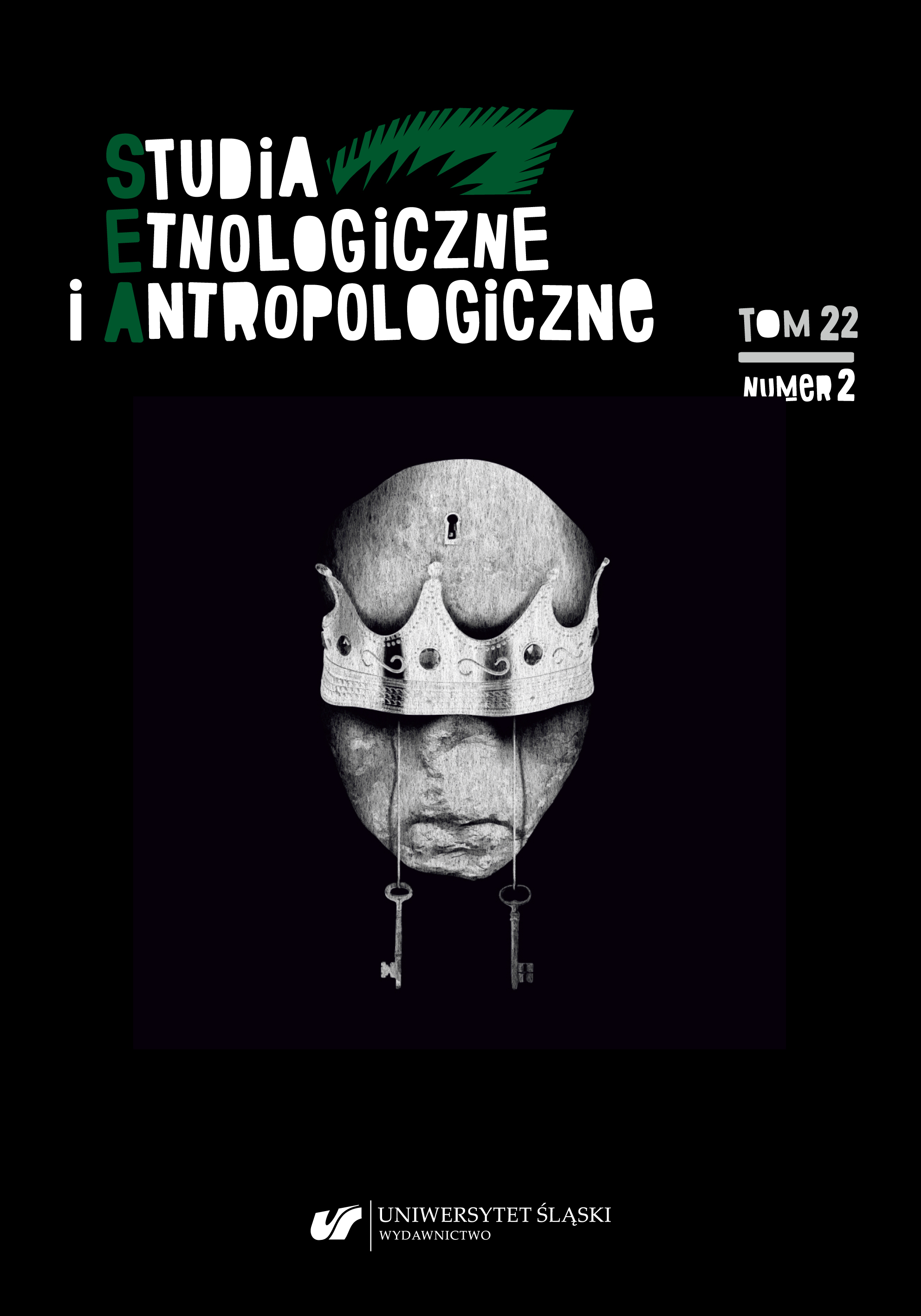Assman J., 2001, Kultura a paměť. Písmo, vzpomínka a politická identita v rozvinutých kultúrach stroveku, Praha, Prostor.
Google Scholar
Bačová V., 1997, Primordiálny versus inštrumentálny základ etnickej a národnej identity, „Československá psychologie”, vol. 41, pp. 303–313.
Google Scholar
Barth F., 1969, Ethnic groups and boundaries, London, Allen and Unwin.
Google Scholar
Botík J., 2007, Etnická história Slovenska: k problematike etnicity, etnickej identity, multietnického Slovenska a zahraničných Slovákov, Bratislava, Lúč.
Google Scholar
Brieštie, 1977, in: Vlastivedný slovník obcí na Slovensku, 1. vyd. Zväzok I., Bratislava, Veda, pp. 247–248.
Google Scholar
Ďurkovská M., 2007, História nemeckého osídlenia na území Slovenska do začiatku 19. storočia. „Človek a spoločnosť”, vol. 10, no. 2, pp. 1–11.
Google Scholar
Fishmann J. A., ed., 1999, Handbook of Language and Ethnic Identity, Oxford, Oxford University Press.
Google Scholar
Gabzdilova S., 2014. Školský systém na Slvoensku v medzivojnovej Československej republike. Košice: UPJŠ v Košiciach.
Google Scholar
Gabzdilová-Olejníková S., Olejník M., 2004, Karpatskí Nemci na Slovensku od druhej svetovej vojny do roku 1953. Acta Carpatho-Germanica XII, Bratislava, Spoločenskovedný ústav SAV.
Google Scholar
Geschwandtner B., 2018a, Búrlivé storočia novoveku, in: Nitrianske Pravno. Miesto s pamäťou zlata, eds. L. Greschner, L. Gaplovská a ďalší, Nitrianske Pravno, Neografia, pp. 87–120.
Google Scholar
Geschwandtner B., 2018b, Storočia premien, in: Tužina: dedina storakých remesiel. Tužina, Neografia, pp. 53–70.
Google Scholar
Geschwandtner B., 2018c, Cesta k zmenám, in: Nitrianske Pravno. Miesto s pamäťou zlata, eds. L. Greschner, I. Gaplovská et al., Nitrianske Pravno, Neografia, pp. 121–150.
Google Scholar
Greschner, L., Gaplovská, L. et al. 2018: Nitrianske Pravno. Miesto s pamäťou zlata, Nitrianske Pravno, Neografia.
Google Scholar
Horváthová M., 2002, Nemci na Slovensku. Etnokultúrne tradície z aspektu osídlenia, remesiel a odievania, Komárno, Lilium Aurum, pp. 35–39.
Google Scholar
Husárová A., Balčiráková M. et al., 2018, Prebúdzanie múz, in: Nitrianske Pravno. Miesto s pamäťou zlata, eds. L. Greschner, I. Gaplovská et al., Nitrianske Pravno, Neografia, pp. 273–292.
Google Scholar
Jenkins R., 1997, Rethinking Ethnicity: Arguments and Explorations, London, Sage.
Google Scholar
Laşak-Gaidoş R., 2009, Jazyk a identita v reflexii bihorského Slováka, in: Varia XVIII. Zborník plných príspevkov z XVIII kolokvia mladých jazykovedcov, eds. M. Ološtiak, M. Ivanová, L. Gianitsová-Ološtiaková, Prešov, Prešovská univerzita v Prešove, pp. 387–397.
Google Scholar
Lacko R., 2009a, História Malinovej, in: Malinová. Monografia obce, ed. R. Lacko, Malinová, Fomi, pp. 12–25.
Google Scholar
Lacko R., 2009b, Malinová v medzivojnovom období, in: Malinová. Monografia obce, ed. R. Lacko, Malinová, Fomi, pp. 30–41.
Google Scholar
Lacko R., 2009c, Školstvo, in: Malinová. Monografia obce, ed. R. Lacko, Malinová, Fomi, pp. 84–86.
Google Scholar
Lacko R., 2009d, Malinová v rokoch 1939–1945, in: Malinová. Monografia obce, ed. R. Lacko, Malinová, Fomi, pp. 42–51.
Google Scholar
Lenovský L., 2014, K transformácii identity v minoritnom prostredí (na príklade jednej novohradskej dediny so slovenským osídlením), „Kontexty kultúry a turizmu”, no. 2, pp. 6–12.
Google Scholar
Lenovský L., 2018, Vzťah jazyka, kultúry a identity v prostredí etnických minorít, „Slavica Slovaca”, vol. 53, no. 3–4, pp. 243–251.
Google Scholar
Letavajová S., 2019, Nové etnické a náboženské minority na Slovensku, in: Stredoeurópske súvislosti národnostného vývoja na začiatku 21. storočia. eds. J. Šutajová, Š. Šutaj, Prešov, Universum, pp. 137–146.
Google Scholar
Lichner H., 1984, Verwandten Chronik: der Familien Drechsler – Fitzel – Greschner – Groß – Mendel – Schön – Schwarz – Turzer in Schmiedshau in der Mittelslowakei bis 1945. Stuttgart: Hilfsbund Karpatendeutscher Katholiken e.V.
Google Scholar
Majo J., 2014, Niekoľko poznámok k fenoménu etnicity v súčasnej slovenskej humánnej geografii, „Acta Geographica Universitatis Comenianae”, vol. 58, no. 2, pp. 149–172.
Google Scholar
Mann A., 2006, Etnická identita – životná nevyhnutnosť? in: Identita ve vztahu k národnostním menšinám. Mezinárodní konference 5. setkání národnostních menšin 24. setkání hnutí R, 10.-11. listopadu 2005, ed. J. Balvín, Praha, pp. 62–67.
Google Scholar
Ondrejovič S., 2008, V tieni babylonskej veže: Jazyk a identita. in: Slovenčina v menšinovom prostredí. Štúdie z II. medzinárodnej vedeckej konferencie Výskumného ústavu Slovákov v Maďarsku. red. A. Uhrinová, A. J. Tóth.
Google Scholar
Békešská Čaba, Výskumný ústav Slovákov v Maďarsku, pp. 91–94.
Google Scholar
Potemra M., 1990, Školstvo na Slovensku v rokoch 1901 – 1918. Košice: Štátna vedecká knižnica.
Google Scholar
Potemra M., 1978, Školská politika maďarských vlád na Slovensku na rozhraní 19. a 20. storočia. Historický časopis, roč. 26, 1978, č. 4, s. 522.
Google Scholar
Pöss O., 2002, Karpatskí Nemci, Bratislava, Múzeum kultúry Karpatských Nemcov.
Google Scholar
Pöss O., Fiľo R., 2015, Tradičný odev karpatských Nemcov voľakedy a dnes, Košice–Bratislava, SNM-Múzeum karpatských Nemcov.
Google Scholar
Pšenák J., 2012, Dejiny školstva a pedagogiky. Bratislava: Edis.
Google Scholar
Richter W., 2017, Der Deutsche Orstdialekt der Slowakischen Gemeinde Malinová (Zeche). Magisterská diplomová práca. Masarykova univerzita, Brno, Ústav germanistiky, nordistiky a nederlandistiky.
Google Scholar
Richter A., Géczyová I., 2018, Skryté v truhliciach a v pamäti, in: Nitrianske Pravno. Miesto s pamäťou zlata, eds. L. Greschner, I. Gaplovská et al., Nitrianske Pravno, Neografia, pp. 177–218.
Google Scholar
Richter S. M., Schwertsik S., 1979, Deutsch Proben. Wie es dahfeim war. Stuttgart: Hans Hawelke.
Google Scholar
Šatava L., 2013, Etnicita a jazyk: teorie, praxe, trendy: čítanka textů, Trnava, UCM.
Google Scholar
Škultétyová J., 2018, Od hračiek k písmenám a čísliciam, in: Tužina dedina storakých remesiel, eds. I. Géczyová, L. Grešner, Tužina, Neografia, pp. 131–144.
Google Scholar
Štatistický úrad Slovenskej republiky, 2023, accessed January 2, 2023, https://www.statistics.sk.
Google Scholar
Tábor nútených prác v Novákoch (1948-1951), 1998, Archív ústavu pamäti národa. Inventár k archívnemu fondu E 98, Levoča.
Google Scholar
Wendelin I., 1996, Es begann in Schmiedshau. Tužina: Ortsgemeinschaft Schmiedshau.
Google Scholar
Zjaba A., 1992, Wörterbuch deutsch-schmiedshauerisch. Tužina: Arbeitskreis Schmiedshau.
Google Scholar
Žabenský M., 2022, Vplyv baníctva na proces adaptácie nemeckej minority v okolí Nitrianskeho Pravna s akcentom na poľnohospodárstvo, „Národopisná revue”, vol. 32, no. 3, pp. 206–222.
Google Scholar
Žudel J., 2010, Osídlenie Slovenska v neskorom stredoveku, Bratislava, Veda.
Google Scholar


 https://doi.org/10.31261/SEIA.2022.22.02.04
https://doi.org/10.31261/SEIA.2022.22.02.04

 10.31261/SEIA
10.31261/SEIA